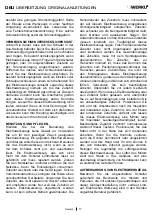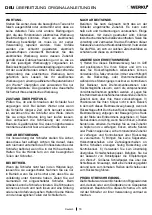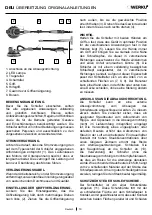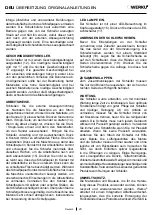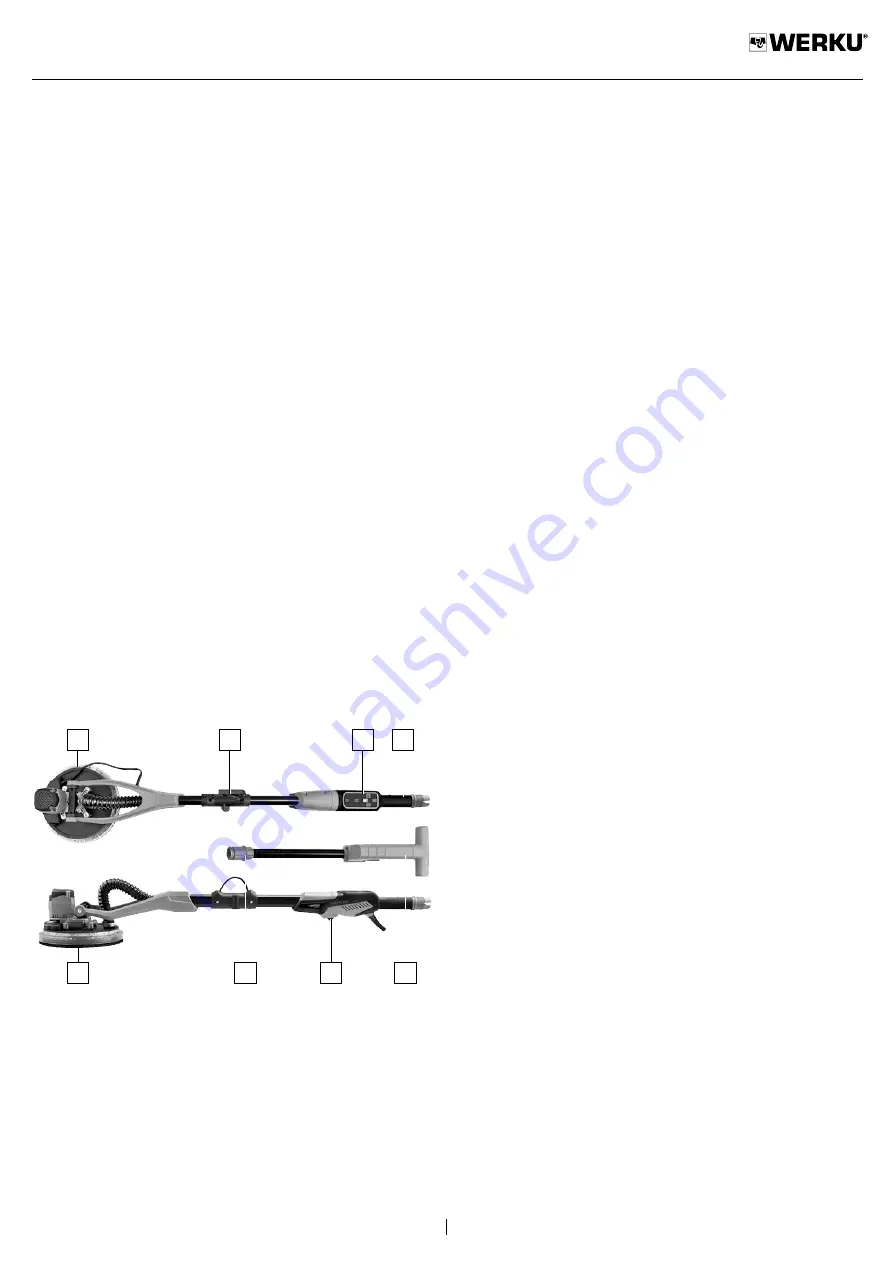
English
ENG
ORIGINAL INSTRUCTIONS
5
if provided, for maximum control over kickback
or torque reaction during start-up. The operator
can control torque reactions or kickback forces, if
proper precautions are taken. 2) Never place your
hand near the rotating accessory. Accessory may
kickback over your hand. 3) Do not position your
body in the area where this power tool will move
if kickback occurs. Kickback will propel this power
tool in direction opposite to the wheel’s movement
at the point of snagging. 4) Use special care when
working corners, sharp edges etc. Avoid bouncing
and snagging the accessory. Corners, sharp edges
or bouncing have a tendency to snag the rotating
accessory and cause loss of control or kickback.
5) Do not attach a saw chain woodcarving discs
or toothed saw discs. Such discs create frequent
kickback and loss of control.
6) Do not use excessively oversized sanding disc
paper. Follow the recommendations of Werku
®
,
when selecting sanding paper. Larger sanding
paper extending beyond the sanding pad presents
a laceration hazard and may cause snagging,
tearing of the disc or kickback.
DESCRIPTION OF THE PRODUCT.
The
sander has been designed to carry out jobs
of sanding walls and ceilings in plasterboard or
finished with plaster
. Refer to this plan to familiarize
yourself with the sander before use.
1
6
7
4
8
2
5
3
1. External vacuum connection.
2. LED lamp.
3. Support plate.
4. Control panel.
5. Handle.
6. Auxiliary handle.
7. Lenght extension adjustment screw.
8. Fastening clip.
USE INSTRUCTIONS.
Before starting up the sander, we recommend
that you carefully read all of the instructions as
indicated. Please respect all regulations regarding
the prevention of accidents, health and safety
directives, laws and applicable restrictions for work
places. The sander must only be used by persons
who have been instructed in its use and only for
the purposes for which it has been designed.
POWER SUPPLY.
Make sure the power supply is adapted to the
requirements shown on the information panel of
the sander (1). Using the motor at low voltage
will make it operate slowly. This will reduce
performance and may cause the motor to overheat.
EXTENSION CORD.
If the working area is at some distance from the
power supply, use an extension cord of enough
diameter and quality.
SETTING EXTENSIBLE.
Loosen the adjustment screw that holds the
extensible turning several times to the left (2). Pull
out the extendable up to the desired position (3).
Tighten the screw by turning it clockwise (4).
IMPORTANT.
The sander must be held by the pole with both
hands to achieve the best possible position for
using the sander in any application (5). Always
keep your hands on the pole of the sander, never
near the sanding head, as the pivots on the head
move in different directions and may trap your
hand causing an injury (6).
The sander has a fully
articulated sanding head able to pivot in different
directions, making it possible to adapt the head
to any type of surface (7, 8, 9). This allows users
to sand the top, middle and bottom of walls or
ceilings without changing position.
CONNECTING TO AN EXTERNAL VACUUM
SYSTEM.
The sander can be connected to an external
vacuum system to collect the dust produced
during the sanding process.
To do so, first make
sure that a suitable bag is fitted inside the vacuum
(not supplied) for collecting plaster and mortar.
Installing an unsuitable or defective dust collection
bag will increase the amount of dust in the working

















